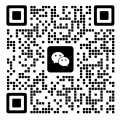How to Eliminate Interference of Radar Level Transmitters?
Radar level meters are commonly used for liquid level measurement, but they can be affected by various interference factors in actual use, leading to inaccurate measurements. Here are some common interference issues and their solutions:
Common Interference Factors
1. Electromagnetic Interference
Interference signals generated by external electromagnetic fields such as motors, frequency converters, power lines, and wireless communication devices can affect the normal operation of radar level meters.
2. Temperature and Pressure Changes
Variations in temperature and pressure inside the tank can affect the propagation speed and reflection characteristics of radar signals, leading to measurement errors.
3. Obstructions Inside the Tank
Structural elements inside the tank, such as agitators, heating pipes, and supports, can reflect radar signals and interfere with level measurements.
4. Foam and Steam
Foam on the liquid surface and steam inside the tank can absorb or scatter radar signals, weakening or distorting the signals.
5. Changes in Medium Characteristics
Changes in the physical properties of the medium, such as conductivity and dielectric constant, can affect the reflection characteristics of radar signals, resulting in inaccurate measurements.
6. Improper Installation Position
An unreasonable installation position, such as being too close to the feed inlet, tank wall, or internal structures, can lead to interference from reflected signals.
7. Blind Zone
The radar level meter has a zone near the probe where it cannot measure (blind zone). If the level enters this blind zone, the radar cannot detect it, which can lead to tank overflow.

How to Handle
1. Electromagnetic Shielding: Ensure that the radar level meter and signal cables are well shielded and grounded to reduce external electromagnetic interference. Use metal enclosures, shielding covers, or cable ferrites to isolate the radar level meter from external electromagnetic fields and reduce interference.
2. Installation Position: Avoid improper installation positions that can cause interference from reflected signals, such as near the feed inlet, too close to the tank wall, or internal structures. Install the radar level meter as far away from the tank wall and internal structures as possible, ensuring that there are no obstructions in the signal path. Adjust the installation angle of the radar level meter to make the signal as perpendicular to the liquid surface as possible.
3. Foam and Steam: Choose a radar level meter with a suitable frequency to reduce the impact of foam and steam on signal quality. Use smoothing filtering algorithms in signal processing to reduce the instantaneous interference from foam and steam.
4. Changes in Medium Characteristics: Regularly calibrate the radar level meter to adapt to changes in medium characteristics. Use radar level meters with automatic compensation functions, which can automatically adjust measurement parameters according to changes in medium characteristics.
5. Environmental Control: Use temperature, humidity, and pressure sensors to compensate for and correct environmental interference. Consider protective measures such as installing shields or rain covers to reduce external interference.
6. Product Selection: Choose the appropriate type of radar level meter based on the characteristics of the material and application scenario. For example, frequency-modulated continuous wave radar level meters have better anti-interference capabilities for highly conductive materials.
7.Regular Calibration and Maintenance: Regularly calibrate the radar level meter to ensure measurement accuracy. Clean the antenna and nearby attachments regularly to ensure stable and reliable performance.
Contact us for more technical instructions on radar level transmitters.

Related Posts
What is Beam Angle of a Radar Level Transmitter
80GHz Radar Level Sensor HR2000: 2023 New Radar Technology
HR80G: Highly Accurate All-purpose Radar Level Sensor
Radar Level Transmitters: Troubleshooting, Common Faults and Solutions





